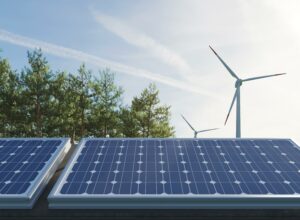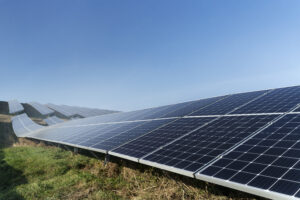Solar power has been one of the most widely used options these days. It should be the most affordable option. It also shows your focus on the environment. However, what if you live in an apartment or a small home?
Installing solar panels may not be a tough task for those with a regular home. But, the challenge comes when you want solar energy for your apartments. Even without a roof, you can still use solar power for your apartment or rental home.
Let us explore if solar energy can work with apartments and rental homes.
Current Energy Challenges in Kerala
Kerala, blessed with its natural beauty, faces many energy and power requirements challenges. Some of these challenges are frequent power outages and a rise in electricity bills.
Given these challenges, the government of Kerala has been on the lookout to address them. One such option is to focus on sustainable energy resources. In fact, the government is looking to increase renewable energy adoption and reduce dependence on conventional power sources.
Solar Suitability for Smaller Spaces
Of course, solar energy is the most worthy option in this context. But, if you live in an apartment or a small rental space, you may not have enough roof space. Would that mean your home is not suitable for solar power installation?
Here are a few of the options that should make sense for the solar suitability –
- Compact solar panels – Modern solar panels help you maximize efficiency even in limited spaces. That would make it suitable for smaller rooftops or balconies.
- Community solar systems – Apartment complexes can install shared solar systems. This will let multiple households to get the solar power from a single installation.
- Intuitive designs – You can also consider solar rooftops, solar balconies, and solar windows. These are a few unconventional options, but they can be extremely helpful.
Government Policies and Incentives
Kerala has been pushing forward to the solar energy adoption. These attempts are supported by both state and central government policies alike.
The solar subsidy in Kerala lets homeowners and businesses install solar panels at a cheaper cost.
Subsidy amount – MNRE offers you a 40% subsidy on rooftop installation for up to a 3 kW power system. Systems between 3 to 10 kW can get a subsidy of 20%.
Eligibility – You should be connected to the grid. The applicant should fulfil the other criteria the state and central governments set.
The Kerala State Electricity Board (KSEB) offers a net metering system, enabling consumers to sell excess solar energy back to the grid, further enhancing the financial viability of solar power.
The practical feasibility of the installation
Kerala is blessed with the best sunlight availability almost throughout the year. Of course, limited availability is possible during the four monsoon months. This would make it highly conducive to solar power generation.
Some of the practical considerations can include
- Sunlight availability – If you get around 4 to 6 hours of peak sunlight daily, Kerala should be the best option for solar energy generation.
- Installation costs and ROI – The solar panel costs in Kerala range from Rs 230000 to Rs 640000, depending on the size you wish to install. The potential ROI should be visible in under 4 to 6 years. Since the Keral govt offers a subsidy, the ROI can even be earlier.
Some case studies
- A family in Kochi installed a 3 kW rooftop solar system, generating enough electricity to meet 80% of their household’s energy needs. Leveraging government subsidies and the net metering policy reduced their ROI period to just five years. The project highlights the viability of small-scale installations in urban settings.
- An apartment complex in the city adopted a community solar system, installing a 50 kW setup shared among 20 households. This initiative lowered electricity bills significantly and encouraged collective efforts to promote sustainable energy.
- A government school in Alappuzha implemented a 5 kW solar panel system to power classrooms and computer labs. The project was funded through a mix of local contributions and government grants, showcasing how solar energy can support community infrastructure.
Overcoming the challenges
Of course, the smaller spaces and tropical climates come with their challenges. But, taking a few innovative solutions can help overcome these challenges quite effectively.
Here are a few options that can be helpful in this context –
- Limited spaces – You can check out vertical installations and community solar systems options. These innovative ideas can help you mitigate the challenges of installing solar systems in a limited space.
- Battery storage – You can use compact battery systems to help store energy for use during outages or low-sunlight periods.
- Maintenance requirements – Kerala’s tropical climate may require you to opt for regular maintenance. This can be taken care of using the services of the local service providers.
Environmental and Financial Benefits
Adopting solar energy panels can offer several benefits that can be environmentally friendly and help you with a few economic advantages.
Some of the areas that solar energy can help you would include
- Reduction of carbon footprint – Switching to solar energy will reduce the reliance on solar fuels. This can also go a long way in avoiding greenhouse emissions.
- Cost savings – Solar energy installation can help you achieve better savings over time. You should be able to break even in under 6 years.
- Statewide impact – Solar adoption contributes to Kerala’s renewable energy targets, aligning with global sustainability goals.
Kerala sees solar energy as playing a significant role in the state’s renewable energy goals. In fact, the state has a high solar insolation level, making it well-suited for solar power generation. Solar energy is considered a crucial component of Kerala’s renewable energy strategy, with the state actively working to maximize its solar potential and achieve its ambitious clean energy targets.
Technological Advances
There have been several technological advancements in the solar energy sector. They have made solar energy more accessible and efficient in smaller setups.
Some of these innovations can include
- Microinverters – The technology optimizes the power generation from each panel. This can go a long way in improving the efficiency of the smaller solar setups.
- Portable solar kits – These kits provide a flexible solution for harnessing solar power without permanent installation.
- Hybrid systems – You can combine solar energy with grid power. This will ensure you uninterrupted electricity, even during low-sunlight periods.
Local Vendors and Services
The local vendors form part of the huge network that can help achieve the best standards for installing solar panels in small homes, apartments, and rented homes. A growing number of solar installation companies in Kerala cater to residential and small-scale projects.
These vendors provide comprehensive services, including installation, maintenance, and support. Residents are encouraged to consult local providers for customized solutions that meet their energy needs.
Conclusion
Kerala’s transition to solar energy is both necessary and promising. Embracing solar power not only ensures energy independence but also contributes to a greener, more sustainable future for Kerala. It should be an excellent option for your needs in solar energy needs that smaller homes, rented apartments and similar other residential complexes may have.
We at GSL Energy help you get the most out of your needs in installing solar energy systems in Kerala or elsewhere. Invest in the best for your home solar energy today with the best solar company in Kochi, GSL Energy Solutions.






